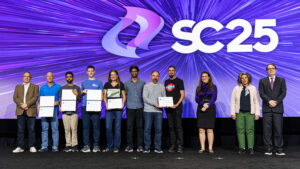
???????????????????????????????????????????????????????????????????????????????????????????????????????????????????????????????????????????????????????????????????????????????????????????????????????????????????????????????????????????????????????????????????????
China has taken a significant leap in electric vehicle technology with the completion of its first large-capacity all-solid-state battery production line. According to Chinese state media, the facility, developed by GAC Group, is currently producing 60 Ah+ vehicle-grade cells on a small-batch test basis. These advanced cells are projected to enable electric vehicles, which currently have a range of 500 kilometers, to exceed 1,000 kilometers once fully integrated into vehicles. Mass production is anticipated between 2027 and 2030.
The term “60 Ah+” refers to the capacity of each battery cell in ampere-hours (Ah). A 60 Ah cell can theoretically supply 60 amperes for one hour before completely discharging. Higher Ah per cell generally translates to more energy storage, which can significantly extend the driving range when multiple cells are combined into a battery pack.
Innovative Technology and Production Techniques
All-solid-state batteries are distinguished by their use of solid electrolytes instead of liquid ones, enhancing thermal stability and safety. GAC’s production line reportedly achieves an areal capacity of up to 7.7 mAh/cm², compared to less than five mAh/cm² in traditional “wet” lithium-ion manufacturing.
Qi Hongzhong, GAC’s research director, stated that the energy density of the new solid-state cells is nearly double that of conventional batteries.
“Vehicles currently capable of 500 km (~310 miles) on a single charge could potentially reach more than 1,000 km (~620 miles) with these cells,”
he explained.
The company employs a “dry” anode production process that integrates slurry mixing, coating, and rolling into a single step, reportedly improving manufacturing efficiency and reducing energy consumption. The solid electrolyte can withstand higher temperatures than liquid electrolytes, reportedly tolerating 300–400 °C compared to approximately 200 °C for conventional batteries.
Future Prospects and Challenges
Small-batch vehicle integration tests are planned for 2026, with a gradual ramp-up to mass production between 2027 and 2030. While this milestone represents a significant technical achievement, the path to commercialization will depend on substantial investment, a reliable supply of solid electrolyte materials, and validation of long-term performance and safety in vehicles.
Globally, the commercialization of all-solid-state batteries remains limited, with several automotive and battery manufacturers exploring the technology. GAC’s production line positions the company among the first in China to have industrial-scale capability for large-format all-solid-state cells. The pace of scale-up and cost competitiveness will determine the technology’s impact on the EV market.
Global Context and Industry Implications
This development follows a global trend where major automotive players are investing heavily in next-generation battery technologies. The announcement comes as countries worldwide are pushing for greener technologies and stricter emissions regulations. The ability to produce high-capacity solid-state batteries could provide a competitive edge in the burgeoning electric vehicle market.
According to industry experts, the shift to solid-state technology could revolutionize the electric vehicle industry by offering safer, more efficient, and longer-lasting batteries.
“The move represents a critical step forward in battery innovation, potentially setting a new standard for electric vehicles,”
said Dr. Li Wei, a leading battery technology researcher.
Meanwhile, other global manufacturers are also racing to develop their own solid-state battery technologies. The competition is fierce, with companies like Toyota and Samsung SDI making significant investments in similar technologies.
The implications of this breakthrough are vast, potentially reducing the cost of electric vehicles and making them more accessible to consumers. As the world continues to grapple with climate change, advancements like these are crucial in the transition to sustainable energy solutions.
In conclusion, while GAC’s achievement marks a significant milestone, the journey towards widespread adoption of all-solid-state batteries is just beginning. The next few years will be critical in determining how quickly and effectively this technology can be integrated into the global market.







